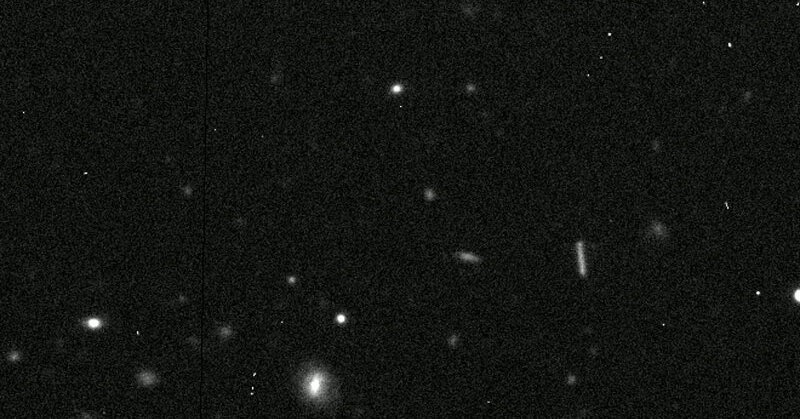For 1000’s of years, Cardea has been referred to as the Roman goddess of doorways and passages, guardian of thresholds. On Monday, she joined the celestial ranks of different mythological figures comparable to Mars, Venus and Andromeda.
However Cardea isn’t a planet or a constellation. It is like a quasi-moon—a really actual kind of asteroid that appears to do a particular orbital dance round Earth.
The Worldwide Astronomical Union, the group of scientists charged with assigning official names to area objects, selected Cardea by way of a naming contest that generated greater than 2,700 entries. The successful title was submitted by Clayton Chilcott, 19, a sophomore on the College of Georgia who entered the competition as a part of an extra-credit project in an introductory astronomy class.
“I got here throughout Cardea and while you learn the outline it simply sounds heavenly,” stated Mr Chilcutt, an accounting and finance main, including that his “small contribution to science” is now a part of the historical past books.
However after additional analysis, Mr. Nasser, who has a Ph.D. within the historical past of science from Harvard discovered that the speck on the poster labeled as a moon was technically not a moon, but additionally not no moon as he describes it.
A planet orbits a star and a moon orbits a planet. Quasimoons orbit the solar however are shut sufficient to Earth to appear to be little moons “doing this double Hula-Hop dance in area,” Mr. Nasser stated.
Mr. Nasser additionally discovered that Zoozve’s actual title was not the jumble of consonants, however merely a misinterpretation by the poster artist: Zoozve was really 2002-VE. Nonetheless, he satisfied the Astronomical Union, which usually solely approves mythological names from tradition or literature, to provide 2002-VE the title Zoozve.
“It was fully stunning and felt like somewhat coup, like somewhat nudge for the stupidity within the universe,” Mr Nasser stated.
However Zoozve wasn’t alone. In truth, Earth additionally had a handful of quasi-moons that certified for naming (just one had a non-alphanumeric designation, Kamo’oalewa).
“No one cared!” Mr. Nasser stated. “We care, I care, lots of people would care.”
So in June, Radiolab and the Union of Astronomers teamed as much as discover a mythological title appropriate for 2004 GU9, a quasi-moon found in 2004. LINEAR undertaking in Socorro, New Mexico The Astronomical Union stated certainly one of its closest approaches to Earth will probably be in October 2026, when it’s about 18.5 million miles from Earth.
The competitors gathered names from greater than 100 totally different international locations. Many contributors wrote poignant tales of mythological origins, some from their very own cultures and a few from throughout the oceans, and what a reputation like this might imply to the world. The astronomers’ union eliminated duplicates, names already in use and “clearly non-mythological names the place folks have not even tried,” stated Mr. Nasser, like Mooney McMoonface.
“Radiolab” helped with the meeting star studded panel from astronomers, journalists, lecturers, college students and even a couple of movie star geeks together with Invoice Nye, Penn Badgley and Celia Rose Gooding. The panelists whittled the checklist all the way down to seven finalists – two of which came from the same University of Georgia course — after which launched the checklist to the general public.
others finalists options the Bakunawa, a legendary dragon from Philippine folklore stated to rise from the ocean to devour the moon; Ehaema, or “Twilight of the Mom” in Estonian folklore; and Tecciztecatl, an Aztec moon god who as soon as aspired to be the solar.
“It is actually bringing folks into science who would possibly in any other case have stated, ‘No, this is not for me,'” stated Kelly Blumenthal, the worldwide group’s director of astronomy.
Ms Blumenthal stated it will be a “disgrace” to let the opposite finalists go to waste and that the union’s naming group would recommend they be used sooner or later.
For Mr. Nasser, Cardea, the successful title, was in the end acceptable for a quasi-moon: an historical guardian and protector, a physique to take care of us in occasions of turmoil and transition.
Mr. Nasser hoped the naming contest helped folks really feel “that connection to what’s larger than all of the chaos that is taking place on earth proper now,” he stated. “House is the most important huge image we’ve.”

